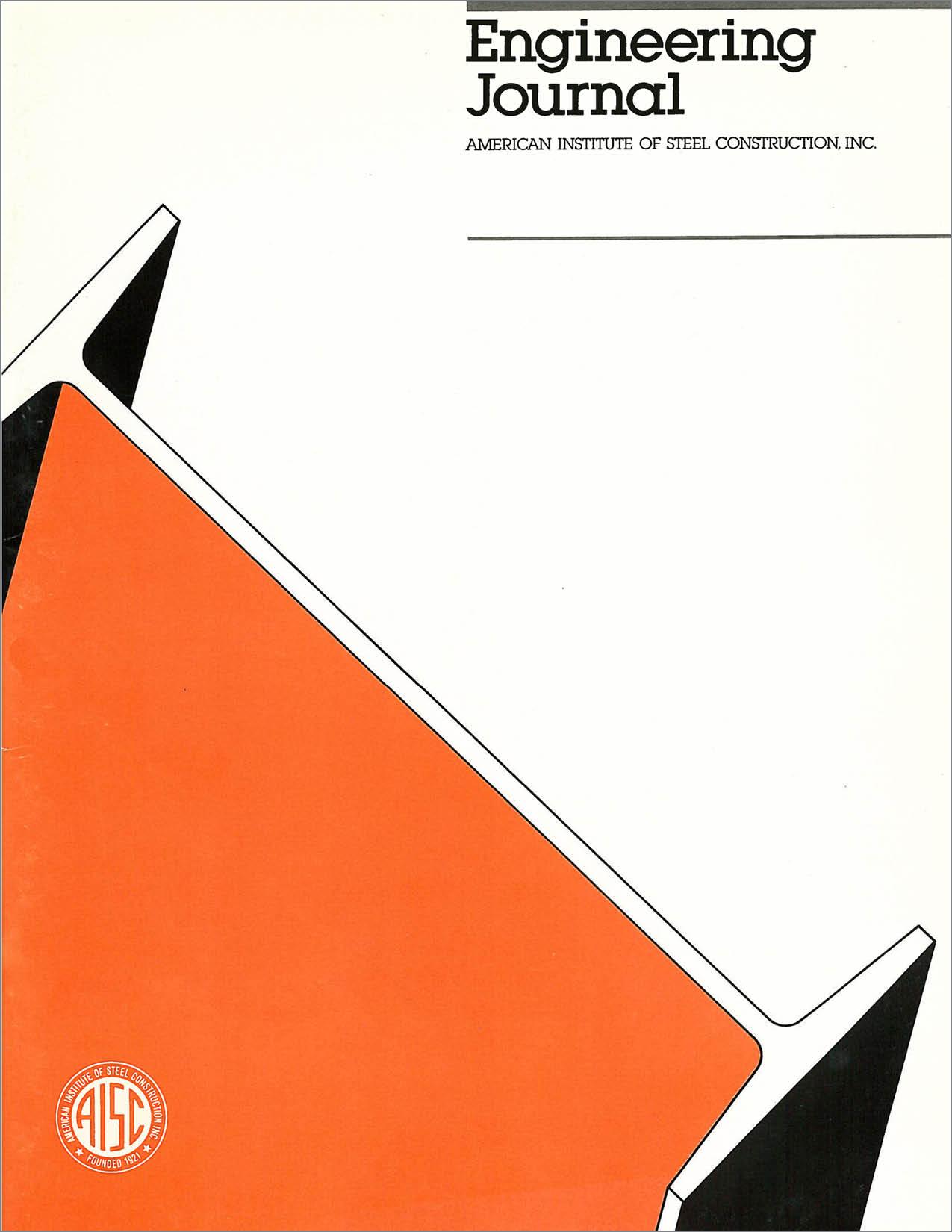Load and Resistance Factor Design of Welded Box Section Trusses
DOI:
https://doi.org/10.62913/engj.v29i3.594Abstract
After the advent of Hollow Structural Sections (HSS) in Britain, experimental and theoretical studies on welded connections with square and round members took place at Sheffield University, leading to the design recommendations of Eastwood and Wood. These were quickly implemented in Canada and publicized by Stelco in the worlds first HSS connections manual. Shortly thereafter they were available to U.S. engineers in an AISI Guide. The more well known reference document in the U.S. for the design of tubular connections is Chapter 10 of AWS D1.1.5 These AWS recommendations originally evolved from a background of practices and experience with fixed offshore steel platforms of welded tubular construction. The connection capacities therefore were expressed with much greater confidence for circular tubes than for box tubes (square or rectangular hollow sections). During the 1970s and 1980s a large amount of experimental and theoretical research on connections between manufactured HSS has taken place in many countries, but almost exclusively outside the U.S. Much of it has been coordinated and synthesized by technical committees of CIDECT (Comità International pour le DÃveloppement et lEtude de la Construction Tubulaire) and IIW (International Institute of Welding). An excellent appreciation of the behavior of welded connections in HSS trusses has evolved and comprehensive design recommendations have consequently been issued by IIW, Kurobane, Wardenier, CIDECT and Dutta and Wurker. Very recently an international consensus has been obtained for LRFD design of statically-loaded, welded connections involving hollow section members in planar trusses.

